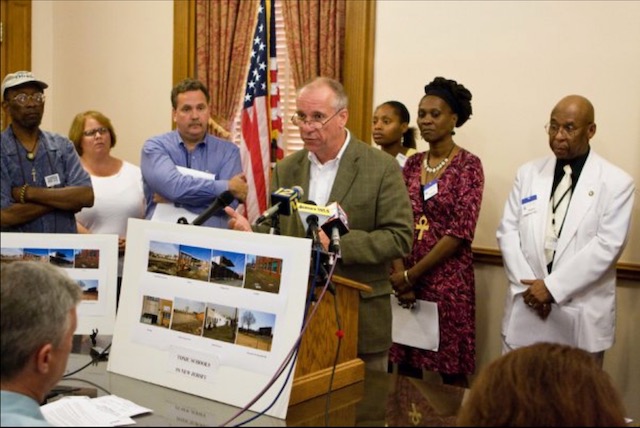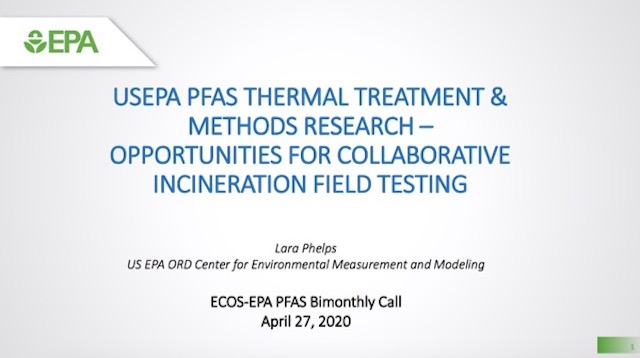Structural Racism “Works” For the Same Reasons That The Environmental Justice Bill Will Fail
Race is Built Into the Institutions and Algorithms of Power
The EJ Bill Ignores The Mechanisms of DEP Regulations and Permits
My prior post highlighted 3 basic structural flaws in the environmental justice legislation (S 232 [2R]) now on Gov. Murphy’s desk.
Today’s post expands upon that analysis by relating it to the larger debate about racism and then laying out other more technical flaws.
I) Institutional Racism Operates By Injecting Race Into Governing Rules
One of the most important ideas to emerge from the Black Live Matter movement is a focus on “institutional racism”, also called “structural racism” and “systemic racism”. That reality exposes the fact that racism operates at multiple levels and is structurally linked to power. Racism is far more insidious, powerful, and destructive than merely the individual level Archie Bunker style prejudice and what is currently described as individual’s “implicit bias”.
Like Occupy Wall Street’s use of the “1`%” metaphor to provide the language and concepts to open up political space to discuss income and wealth inequality, BLM’s focus on “institutional racism” has opened up similar space to analyze and discuss racism.
I attribute a catalyst for the current focus on institutional racism to Michele Alexander’s brilliant groundbreaking 2010 book “The New Jim Crow”.
That book exposed in detail exactly how racism is built into the criminal justice system at every level, from the school-to-prison pipeline, to police deployments & tactics, to criminal laws, to sentencing formulas, to prosecution, and to prisons.
(the work of author Alex Vitale’s “The End of Policing” expands Alexander’s focus on race and slave patrols in the origin of police to include the history of using police as instruments of social control and class warfare).
[Full Disclosure: I’m on the side of universal/class in the “race/identity versus class/universal” debates. Penn Professor Adolph Reed makes the case in his distinction between racial democracy and social democracy – listen to today’s interview!]
Similarly, Ta-Nehisi Coates’ work “The Case For Reparations“ deconstructs institutional racism, particularly in showing how “redlining” simultaneously created segregated ghettos, denied black people opportunity, and erected barriers to black social mobility and wealth formation. This institutional racism operated by injecting racism into the quantitative formulas and methods (algorithms) for how banks and insurance companies analyzed financial risks and allocated capital investment resources, as well as how government designed social programs and allocated resources (there were other equally racist rule changes, including private property restrictive covenants and local exclusionary zoning)
Both Alexander and Coates expose how racism was built into the algorithms of power and how racism actually works in society.
Feminists also have shown how sexism is built into daily life. My favorite illustration is how even auto safety is sexist, as the engineering, safety and design strategies were all based on the male body. This fact results in smaller bodied women suffering far more serious crash injuries than would be the case if things like seatbelts and auto safety design were based on the female anatomy.
The underlying similarity in all these examples in how institutional racism works is how racism is built into the algorithms of power.
Racism “works” so powerfully because it is built into the Operating Systems and algorithms of power.
In order to dismantle these racist systems, the underlying algorithms must change.
Which takes me to the pending environmental justice legislation.
II) EJ Bill Fails To Change The Rules of the Regulatory Game
As I previously wrote, that bill completely fails to address DEP’s regulatory algorithms – things like how DEP conducts “risk assessment” and local air quality impacts.
Just like the redlining banks and insurance companies injected race into their financial risk assessment, and the cops inject race into deciding which neighborhoods to target and which groups to stop & frisk and profile, and the car companies based auto safety on sexism, so too does DEP inject race (if only by neglect) into their regulations and permit decisions.
In order to provide environmental justice, environmental laws, DEP regulations, Technical Manuals, Guidance Documents, permit review methods, public participation processes, and permit decision criteria and standards must be changed.
Again, the pending EJ bill fails to do this, thereby giving DEP a pass to continue the status quo business as usual.
III) Details Matter – Some significant positives
Much, but not all, of my prior analyses and criticism remain valid, see:
- NJ Democratic Legislators Refuse To Consider Even A Weak Environmental Justice Bill
- Gov. Murphy’s “Environmental Justice” Legislation Would Do Nothing To Reduce Current Pollution or Unjust Disproportionate Burdens In Minority Communities
- Now Is the Time To Make Real Demands On Environmental Justice Legislation
- 18 Years After Scathing Criticism By Federal Judge For Ignoring “Environmental InJustice”, NOTHING HAS CHANGED AT NJ DEP
However, this post shall supercede prior posts that are in conflict, because the bill has been amended since those posts were written.
On the positive side, the bill would provide authority for DEP to consider cumulative impacts, deny permits for certain new major sources of pollution, and impose conditions on renewals of permits for existing facilities, upon a finding that there are or would be unacceptable disproportionate public health stressors or environmental impacts in certain already overburdened “environmental justice communities that meet the criteria in the bill for that designation.
However, there are several problems with the implementation and enforcement of this authority which narrow it and render it unworkable, such that it would be rarely – if ever – invoked, which I discussed yesterday and will add details today.
Another positive is that the final version of the bill also narrowed a huge loophole I previously criticized regarding existing sources of pollution and renewal of permits for those facilities. However, DEP is not authorized to deny those permits, but merely impose conditions, as I discuss below.
The DEP rulemaking delay issue I flagged also has been addressed, although imperfectly.
IV) Huge Negatives Outweigh Positives and Argue For Governor Murphy To Veto
The negatives far outweigh the positives, which leads me to recommend that Gov. Murphy veto the bill, as the flaws are too major to be remedied via a conditional veto (CV) and even if they were, the legislature is very unlikely to concur with a CV that essentially re-writes the legislation.
Here are the major technical problems with the bill:
1. Contradictions On Cumulative Impacts
The bill, for the first time, would force DEP to consider “adverse cumulative environmental or public health stressors in the overburdened community”.
That is a huge step forward, but other loopholes in the bill completely gut this cumulative impact standard.
The whole concept of “cumulative impacts” is based upon the fact that while a single small source of pollution may have negligible adverse impacts, when multiple sources are considered, then the cumulative pollution from these many small sources may be harmful.
Additionally, the DEP’s Paterson NJ air toxics/EJ study addressed cumulative risk. That study found that small pollution sources located nearby sensitive receptors (like schools) could create dangerous “hot spots”. That study also confirmed that the cumulative impact of many small sources can create unacceptable risks.
But the bill would gut this cumulative impact standard while ignoring the whole concept of “hot spots”.
The bill has a 100 ton per year air pollution emission threshold. Smaller pollution sources (i.e. the emit less than 100 tons) would not be regulated by the cumulative impacts standard. This 100 TPY threshold would exempt numerous small sources that, combined, have unacceptable cumulative impacts as well as potential “hot spot” risks.
Additionally, it is not clear that even major sources above the 100 TPY threshold that are regulated would have to consider the cumulative impacts of the smaller sources.
That 100 TPY exemption threshold contradicts the fundamental concept of cumulative impacts and renders the bill ineffective and absurd on its face.
2. Compelling public need waiver
The bill would allow DEP to waive the permit denial or permit condition requirements of the bill – regardless of public health or environmental impacts – if DEP finds that the project/permit in question would satisfy a “compelling public need”, i.e. based on a DEP finding that the “facility will serve a compelling public interest in the community where it is to be located”
It is arguable that this broad and virtually unconditional waiver actually weakens current environmental laws, which do NOT authorize DEP to waive permit requirements to satisfy any “compelling public need”.
Accordingly, DEP could use this bill’s compelling public need waiver authority to issue various environmental permits that they would have denied under current law.
Additionally, the whole concept of a “compelling public need” waiver is deeply troubling. It will operate in direct contradiction of and defeat the stated primary objective of the legislation to reduce the siting of polluting facilities in disproportionately overburdened EJ communities.
Here’s why:
a) There is a compelling public need to manage waste – including hazardous waste. Therefore, DEP will continue to issue and renew permits for garbage incinerators – and even worse – hazardous waste management treatment, storage and disposal facilities in EJ communities
b) There is a compelling public need to treat domestic sewage and industrial wastewater. There fore DEP will continue to issue and renew sewage treatment plants and industrial wastewater treatment operations in EJ communities.
c) There is a compelling public need to compost and recycle wastes. Therefore, DEP will continue to issue and renew permits for scrap metal, junkyards, compost, and recycling facilities in EJ communities.
d) There is a compelling public need to ship and transfer garbage. Therefore, DEP will continue to issue and renew permits for garbage transfer stations in EJ communities.
e) The Chemical industry already argues and will now be given a legal basis to argue that there is a compelling public need to manufacture chemicals that are needed to make Kevlar vests that protect our troops and cops.
Therefore, DEP will continue to issue and renewal permits for highly polluting industrial chemical manufacturing facilities, including facilities like Khuene Chemical (and the rest of the “Fatal Fifteen”), that handle extraordinarily hazardous chemicals that could kill thousands of nearby residents.
f) There is a compelling public need to provide energy. Because the bill completely ignores climate change, greenhouse gas emissions, and energy policy, DEP will continue to issue and renew permits for major fossil fueled energy facilities, including pipelines, compressor stations, generation stations, and LNG/oil/gas storage and refining facilities in EJ communities.
g) The pharmaceutical industry will argue that there is a compelling public need to manufacture drugs and consumer products. Therefore, DEP will continue to issue and renew permits for polluting manufacturing facilities.
h) The NJ BIA, Chamber of Commerce, and trade unions already argue and now ill be given a legal basis to argue that there is a compelling public need to provide jobs and local tax ratables, especially over the next decade in a post COVID-19 depressed economy.
DEP will be pressured to accept these economic argument in virtually every EJ permit review process.
The compelling public need waiver is certain to be litigated and courts are very likely to interpret this loophole broadly – as it is written – and in a very pro-business anti-EJ/public health/environmental way. That could create a deadly statewide precedent that actually makes current conditions worse!
Just look at how the NJ Supreme Court struck down Newark’s Police Citizen Review Board subpoena power.
3. Permit Renewals
The final version of the bill narrowed a huge loophole. The bill previously exempted renewals of existing permits (and existing pollution) from the new EJ review process.
The final version has included permit renewals, but DEP power is limited with respect to renewals. DEP may not deny renewal of an existing permit, regardless of whether or not the pollution creates unacceptable impacts. DEP may only impose conditions on permit renewals. There are no specifics provided in the bill about what these conditions may be or how they are related to offsetting the pollution from the renewed permit.
Those are serious flaws that will limit DEP’s ability to protect EJ communities, who suffer disproportionate and unacceptable pollution from existing DEP permitted facilities.
4. The Bill Has Major Loopholes
- Toxic sites are exempt. This makes no sense because there are many toxic sites – from dry cleaners and gas stations to major industry sites – and those sites significantly impact communities via toxic chemicals discharged to air, soil, and water and vapor intrusion into buildings.
- Hospital medical waste incinerators are exempted regardless of pollution impacts. Hospital incinerators are highly polluting, because they: a) burn lots of plastic (the combustion byproducts from chlorinated plastics are highly toxic, including dioxin and furans); b) are located in dense populated areas; c) have poor combustion (e.g. they fail to maintain high temperatures and long residence times); d) ineffective pollution controls; and e) their low smoke stacks heavily pollute nearby dense populations. These incinerators should be she down immediately, not exempted from review.
- Greenhouse gas emissions are exempt. This ignores the climate emergency and the fact that EJ communities suffer disproportionately from climate impacts, especially from air pollution and extreme heat & urban heat island effects. This is an unforgivable missed opportunity to reduce GHG emissions as well at mitigate climate impacts in urban NJ.
(and I believe we need to go “Beyond the Green New Deal” to respond to the climate emergency)
5. Local Authority Stripped
The final version of the bill eliminated local power to block DEP permits, a strong provision that was included in the original version of the bill.
This stripped people and local governments of real power and forcing exclusive reliance on DEP decisions
We can do better than this.
The BLM activists must not be sold out or sold short.


